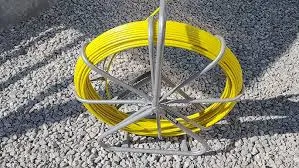
-
 Afrikaans
Afrikaans -
 Albanian
Albanian -
 Amharic
Amharic -
 Arabic
Arabic -
 Armenian
Armenian -
 Azerbaijani
Azerbaijani -
 Basque
Basque -
 Belarusian
Belarusian -
 Bengali
Bengali -
 Bosnian
Bosnian -
 Bulgarian
Bulgarian -
 Catalan
Catalan -
 Cebuano
Cebuano -
 Corsican
Corsican -
 Croatian
Croatian -
 Czech
Czech -
 Danish
Danish -
 Dutch
Dutch -
 English
English -
 Esperanto
Esperanto -
 Estonian
Estonian -
 Finnish
Finnish -
 French
French -
 Frisian
Frisian -
 Galician
Galician -
 Georgian
Georgian -
 German
German -
 Greek
Greek -
 Gujarati
Gujarati -
 Haitian Creole
Haitian Creole -
 hausa
hausa -
 hawaiian
hawaiian -
 Hebrew
Hebrew -
 Hindi
Hindi -
 Miao
Miao -
 Hungarian
Hungarian -
 Icelandic
Icelandic -
 igbo
igbo -
 Indonesian
Indonesian -
 irish
irish -
 Italian
Italian -
 Japanese
Japanese -
 Javanese
Javanese -
 Kannada
Kannada -
 kazakh
kazakh -
 Khmer
Khmer -
 Rwandese
Rwandese -
 Korean
Korean -
 Kurdish
Kurdish -
 Kyrgyz
Kyrgyz -
 Lao
Lao -
 Latin
Latin -
 Latvian
Latvian -
 Lithuanian
Lithuanian -
 Luxembourgish
Luxembourgish -
 Macedonian
Macedonian -
 Malgashi
Malgashi -
 Malay
Malay -
 Malayalam
Malayalam -
 Maltese
Maltese -
 Maori
Maori -
 Marathi
Marathi -
 Mongolian
Mongolian -
 Myanmar
Myanmar -
 Nepali
Nepali -
 Norwegian
Norwegian -
 Norwegian
Norwegian -
 Occitan
Occitan -
 Pashto
Pashto -
 Persian
Persian -
 Polish
Polish -
 Portuguese
Portuguese -
 Punjabi
Punjabi -
 Romanian
Romanian -
 Russian
Russian -
 Samoan
Samoan -
 Scottish Gaelic
Scottish Gaelic -
 Serbian
Serbian -
 Sesotho
Sesotho -
 Shona
Shona -
 Sindhi
Sindhi -
 Sinhala
Sinhala -
 Slovak
Slovak -
 Slovenian
Slovenian -
 Somali
Somali -
 Spanish
Spanish -
 Sundanese
Sundanese -
 Swahili
Swahili -
 Swedish
Swedish -
 Tagalog
Tagalog -
 Tajik
Tajik -
 Tamil
Tamil -
 Tatar
Tatar -
 Telugu
Telugu -
 Thai
Thai -
 Turkish
Turkish -
 Turkmen
Turkmen -
 Ukrainian
Ukrainian -
 Urdu
Urdu -
 Uighur
Uighur -
 Uzbek
Uzbek -
 Vietnamese
Vietnamese -
 Welsh
Welsh -
 Bantu
Bantu -
 Yiddish
Yiddish -
 Yoruba
Yoruba -
 Zulu
Zulu


Aug . 10, 2024 12:00 Back to list
Analyzing Lever Block Price Trends and Their Impact on Supply Chain Efficiency and Cost Management
Understanding Lever Block Price A Comprehensive Insight
Lever blocks, also known as lever hoists, are essential tools in various industries, including construction, manufacturing, and shipping. They provide a mechanism for lifting and pulling heavy loads with minimal effort. The price of a lever block can vary widely based on several factors, including capacity, brand, and features. This article explores the key elements that influence lever block prices, helping consumers make informed purchasing decisions.
Key Factors Influencing Lever Block Prices
1. Capacity One of the primary determinants of a lever block's price is its lifting capacity. Lever blocks are designed to handle different weight ranges, typically from 0.5 tons to 10 tons or more. Higher-capacity models tend to be more expensive due to the additional materials and engineering required to ensure safety and reliability at greater weights. For instance, a lever block rated for 5 tons may cost significantly more than a 1-ton model due to the increased design and safety standards necessary for higher loads.
2. Brand Reputation The brand manufacturing the lever block also plays a crucial role in pricing. Established brands with a long history of quality and reliability often command higher prices. Consumers are often willing to pay a premium for recognized brands that offer warranties, customer support, and proven track records. Conversely, less-known brands may offer lower-priced options, but they may compromise on quality and safety standards.
lever block price

3. Construction and Materials The materials used in the construction of lever blocks can significantly affect their prices. High-quality steel and advanced manufacturing processes lead to more durable and reliable products but also increase the cost. For example, lever blocks with corrosion-resistant finishes or those made with lightweight yet strong materials will typically be priced higher than their standard counterparts. Additionally, options that include enhanced safety features, such as automatic brakes or overload protection, will also see an increase in price.
4. Additional Features Lever blocks with extra features or accessories tend to be more expensive. These features could include hooks with a safety latch, various lifting heights, or options for manual and electric use. Buyers need to assess whether these additional features align with their needs, as they can justify the higher price.
5. Market Demand and Supply Prices can also fluctuate based on market demand and supply. During periods of high demand, such as after natural disasters or during construction booms, prices may increase. Conversely, during economic downturns when demand is low, prices may decrease. Seasonal sales events or promotional offers can also affect pricing temporarily.
Conclusion
In conclusion, understanding the factors that influence lever block prices is essential for making an informed buying decision. Prospective buyers should evaluate their specific needs in terms of lifting capacity, desired brand, and necessary features. Investing in a high-quality lever block can result in greater safety and efficiency in operations, making it a worthwhile expenditure despite the higher initial cost. Ultimately, the right lever block will ensure that heavy lifting tasks are conducted smoothly and safely, safeguarding both workers and equipment. As industries continue to evolve, so too will the technology and pricing of lever blocks, urging consumers to stay informed and proactive in their purchasing strategies.
Latest news
duct-rodders-and-conduit-rod-tools
NewsAug.22,2025
ratchet-pullers-and-wire-tightening-tools
NewsAug.22,2025
chain-ratchet-pullers-and-hoist-solutions
NewsAug.22,2025
telescopic-hot-stick-for-electrical-and-high-voltage-use
NewsAug.22,2025
cable-clamp-and-insulated-cable-clamp-systems
NewsAug.22,2025
duct-rodder-conduit-rodder-and-cable-solutions
NewsAug.22,2025








